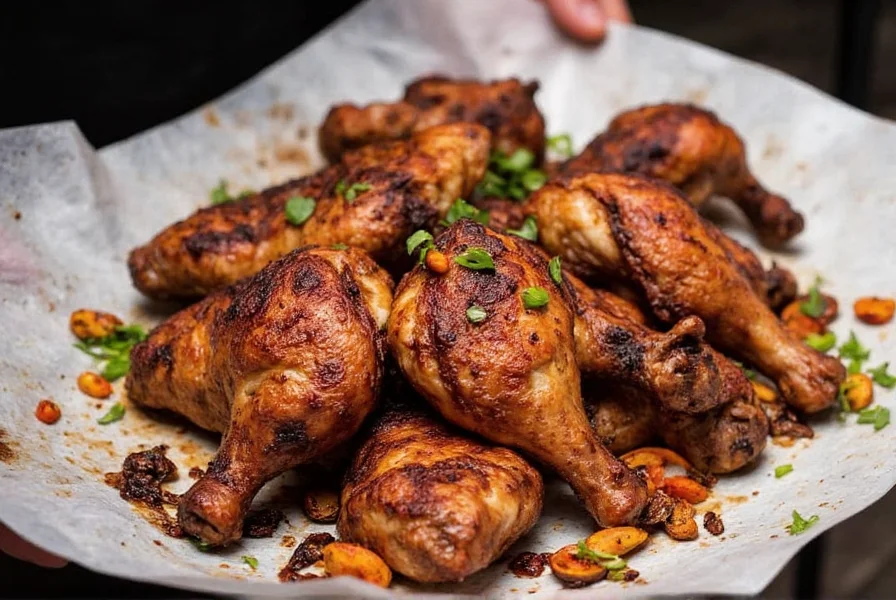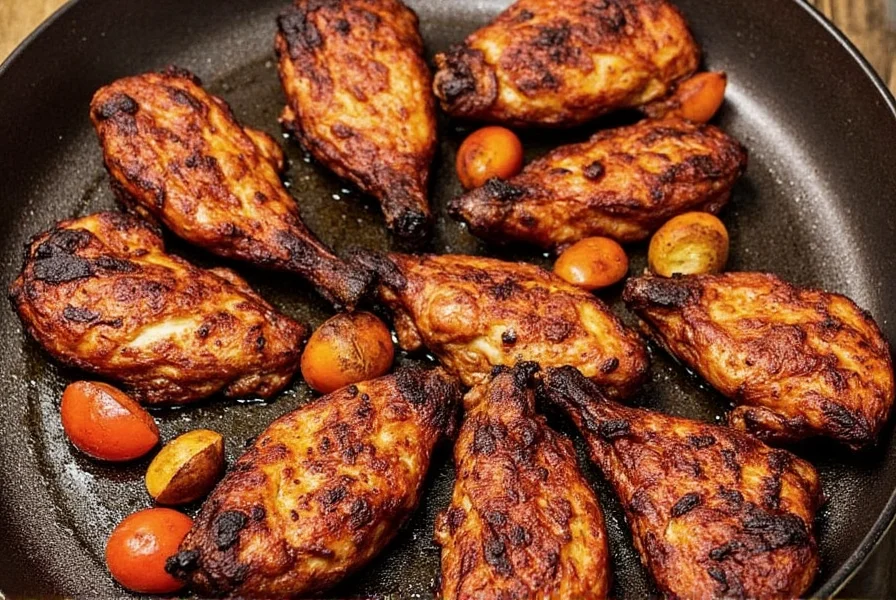
What Exactly Is Blackened Chicken?
Blackened chicken isn't burnt chicken—it's a precise cooking technique developed by New Orleans chef Paul Prudhomme in the 1980s. The "blackened" appearance comes from spices in the rub caramelizing and slightly charring at extremely high temperatures. Unlike grilled or fried chicken, blackening creates an intensely flavorful crust while keeping the interior moist. The magic happens through the Maillard reaction combined with the controlled charring of spices like paprika, cayenne, and thyme.
Essential Equipment for Perfect Blackened Chicken
Using the right equipment makes or breaks your blackened chicken results. A seasoned cast iron skillet is non-negotiable—its ability to maintain extreme, even heat creates the perfect sear. Avoid non-stick pans which can't withstand the necessary temperatures and may release toxic fumes. Before starting, ensure your kitchen ventilation is excellent; this process generates substantial smoke. Keep a spray bottle of water nearby for minor flare-ups, though never spray directly on the chicken as moisture prevents proper blackening.
| Equipment | Why It Matters | Alternative |
|---|---|---|
| Cast iron skillet | Holds heat above 500°F needed for proper blackening | Carbon steel pan (less ideal) |
| Splatter screen | Reduces smoke while allowing heat circulation | None (expect significant smoke) |
| Meat thermometer | Ensures perfect internal temperature (165°F) | Time-based cooking (less accurate) |
The Ultimate Blackening Spice Rub Formula
The spice rub constitutes the flavor foundation of properly blackened chicken. Unlike marinades, this dry rub creates the signature crust through direct contact with extreme heat. For authentic results, combine 2 tablespoons paprika (smoked paprika adds depth), 1 tablespoon each of dried thyme and oregano, 2 teaspoons cayenne pepper (adjust for heat preference), 1 tablespoon garlic powder, 1 tablespoon onion powder, 1 tablespoon black pepper, and 2 teaspoons salt. Whisk thoroughly to distribute heat elements evenly—clumps of cayenne will create burned spots rather than uniform blackening.
Pro tip: Toast whole spices before grinding for maximum flavor. For how to make blackened chicken without burning spices, ensure your rub contains sufficient paprika as it has a higher smoke point than pure cayenne. The ideal ratio maintains 3:1 paprika to cayenne for balanced heat and color.
Step-by-Step Blackening Technique
Mastering the proper method for blackening chicken breasts requires attention to detail at every stage:
- Dry the chicken thoroughly—moisture is the enemy of proper blackening. Pat each piece with paper towels for 60 seconds per side.
- Apply generous spice coating—press the rub firmly into all surfaces, including edges. Don't be shy; the rub should form a visible 1/8-inch layer.
- Preheat your cast iron—place empty skillet over high heat for 8-10 minutes until it smokes slightly. Test with a pinch of rub—it should sizzle violently.
- Cook with confidence—place chicken in hot skillet away from you to avoid oil splatter. Expect immediate, vigorous sizzling.
- Resist flipping too soon—wait 3-4 minutes until the crust releases naturally. Peek underneath to check for even blackening.
- Finish cooking—flip once and cook 2-3 minutes more for breasts, or until internal temperature reaches 165°F.
Avoiding Common Blackening Mistakes
Many home cooks struggle with why their blackened chicken turns out bitter or burnt. The most frequent errors include:
- Insufficient skillet preheating—the pan must exceed 500°F to instantly sear the rub without absorbing oil
- Using wet chicken—any surface moisture steams instead of sears, preventing proper crust formation
- Overcrowding the pan—reduces temperature dramatically, causing steaming rather than blackening
- Incorrect rub composition—too much sugar or pure cayenne burns before proper blackening occurs
- Flipping too early—disturbs the developing crust, leaving rub behind in the pan

Serving Suggestions and Pairings
Blackened chicken's bold flavors pair beautifully with cooling elements that balance the heat. Try it with:
- Citrus-herb aioli or remoulade sauce
- Simple green salad with vinaigrette
- Cilantro-lime rice or cheesy grits
- Grilled asparagus or roasted vegetables
For how to store and reheat blackened chicken properly, place leftovers in an airtight container within two hours of cooking. Reheat in a 350°F oven for 10-12 minutes—avoid microwaving which destroys the crust. Properly stored, blackened chicken maintains quality for 3-4 days.
Frequently Asked Questions
Can I blacken chicken without a cast iron skillet?
While possible with carbon steel or heavy-bottomed stainless steel pans, cast iron delivers superior results. Its exceptional heat retention creates the consistent 500°F+ temperature needed for proper blackening. Non-stick pans cannot withstand these temperatures and will degrade, potentially releasing toxic fumes.
Why does my blackened chicken taste bitter?
Bitterness typically indicates burned spices, usually from insufficient skillet preheating or excessive sugar in the rub. Ensure your pan smokes slightly before adding chicken, and maintain the recommended 3:1 paprika to cayenne ratio. Pure cayenne burns quickly—always dilute with paprika as the base.
How do I prevent excessive smoke when blackening chicken?
Turn on your exhaust fan at maximum setting before starting, open windows, and consider cooking near an exterior door. Using a splatter screen reduces airborne oil while maintaining heat. For indoor cooking, reduce heat slightly (but maintain at least 450°F) and ensure your spice rub contains minimal sugar, which burns easily and creates more smoke.
Can I blacken frozen chicken?
Never blacken frozen or even cold chicken. The temperature differential prevents proper searing and causes excessive moisture release. Always thaw chicken completely in the refrigerator, then bring to room temperature for 20-30 minutes before cooking. Pat thoroughly dry immediately before applying the spice rub.
What's the difference between blackened and grilled chicken?
Blackening uses direct, extremely high heat in a skillet to char the spice rub, creating an intense crust in minutes. Grilling uses radiant heat at lower temperatures (typically 350-450°F), resulting in more gradual browning without the distinctive charred spice crust. Blackened chicken develops deeper, more complex flavors through the controlled charring process that grilling cannot replicate.










 浙公网安备
33010002000092号
浙公网安备
33010002000092号 浙B2-20120091-4
浙B2-20120091-4